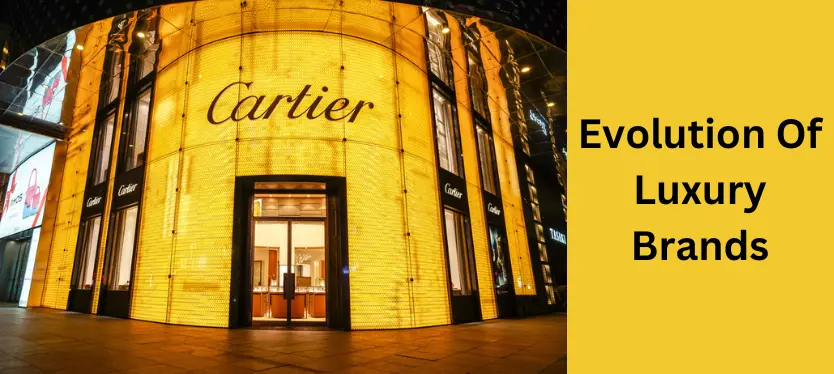Luxury manufacturers have gone through a top-notch evolution in recent years, expanding their attain past conventional markets and embracing new opportunities for growth and innovation. From emerging economies to digital structures, luxurious brands are adapting their strategies to resonate with various purchaser demographics while retaining their exclusivity and prestige. Let’s delve into the evolution of luxury manufacturers and explore how they may be navigating new markets with sophistication and style.
Traditional Market Expansion: From Europe to Global Domination
Historical Roots
The history of luxury brands is deeply rooted in Europe, where iconic homes inclusive of Chanel, Louis Vuitton, and Gucci installed themselves as pioneers of beauty and craftsmanship. These brands catered mostly to affluent purchasers in European capitals, cultivating an air of mystery of exclusivity and refinement.
Global Expansion
In the latter 1/2 of the 20th century, luxurious manufacturers began to expand their presence beyond Europe, venturing into North America, Asia, and the Middle East. This enlargement was fueled by growing affluence, globalization, and the rise of consumerism, as emerging markets offered beneficial possibilities for the boom.
Embracing Emerging Economies: The Rise of BRIC Nations
BRIC Nations
The emergence of BRIC countries (Brazil, Russia, India, China) as economic powerhouses has extensively impacted the posh industry. These nations boast a growing center elegance with a penchant for luxurious items, using demand for prestigious brands and dressmaker labels.
Localization Strategies
Luxury brands have followed localization strategies to cater to the precise possibilities and cultural nuances of emerging markets. From designing special collections inspired by local traditions to commencing flagship shops in prime locations, brands are tailoring their offerings to resonate with diverse purchaser demographics.
Digital Transformation: Embracing E-Commerce and Social Media
Shift to Online Retail
The virtual revolution has revolutionized the way luxurious brands engage with purchasers, prompting a shift closer to online retail and e-commerce structures. Brands are making an investments in sophisticated e-commerce websites, cell apps, and digital buying studies to cater to tech-savvy clients who choose the convenience of online buying.
Social Media Marketing
Social media has come to be an effective device for luxury brands to connect with customers and cultivate brand loyalty. Platforms like Instagram, Facebook, and TikTok are leveraged to showcase new collections, interact with fans, and amplify brand messaging. Influencer partnerships and backed content material further enhance logo visibility and attain.
Sustainability and Ethical Practices: Meeting Consumer Expectations
Growing Consciousness
Consumers are increasingly prioritizing sustainability and moral practices when making shopping selections. Luxury brands are responding to this shift by incorporating eco-friendly materials, lowering carbon footprint, and imposing ethical sourcing and manufacturing practices.
Corporate Responsibility
Luxury manufacturers are actively conducting company social responsibility initiatives, helping environmental conservation, social justice reasons, and network improvement projects. By aligning with values that resonate with customers, brands can toughen their reputation and foster long-term loyalty.
Conclusion: Adapting to New Realities with Elegance and Precision
The evolution of luxury manufacturers reflects a dynamic interplay between subculture and innovation, heritage and modernity. By embracing emerging economies, virtual transformation, sustainability, and ethical practices, luxurious brands are navigating new markets with sophistication and style. With a commitment to excellence and deep know-how of patron goals, luxury manufacturers are poised to thrive in an ever-converting worldwide panorama, continuing to inspire and captivate discerning customers around the arena.
Frequently Asked Questions (FAQs)
Ans. Luxury manufacturers keep exclusivity by carefully controlling distribution channels, restricting manufacturing quantities, and presenting personalized reviews to discerning shoppers. By retaining a feel of rarity and prestige, brands can uphold their luxury reputation at the same time as increasing into new markets.
Ans. Cultural sensitivity is paramount in luxurious emblem expansion to ensure that services resonate with local tastes and preferences. Brands ought to behave through market research and adapt their techniques to reflect cultural nuances, traditions, and values to reach various markets.
Ans. Digital innovation permits luxury manufacturers to attain new audiences, enhance customer engagement, and streamline operations. From e-trade systems to virtual reality reviews, digital technology is reshaping the posh retail panorama and driving the increase in the digital age.
Ans. Luxury brands are incorporating sustainability and moral practices into their commercial enterprise fashions by prioritizing eco-friendly substances, ethical sourcing, and accountable production techniques. By embracing sustainability, manufacturers can meet consumer expectations and contribute to high-quality social and environmental effects.
Ans. Luxury manufacturers may face challenges along with cultural variations, regulatory hurdles, and competition from nearby and international competition whilst expanding into new markets. Additionally, retaining brand integrity and exclusivity even as catering to diverse client demographics calls for cautious strategic planning and execution.










Comments are closed